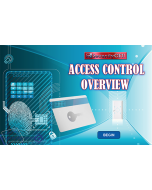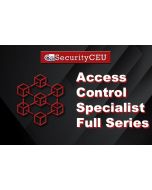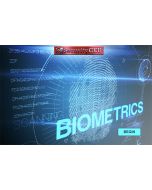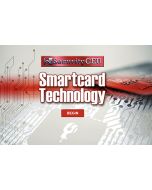What Are the 3 Types of Access Control?

The use of access control technologies can help to identify who has the privilege and responsibility for performing specific jobs. It authenticates them, then grants only that person keys or terminals they need - nothing more than what's necessary at any given time. There are three types of access control technologies that are commonly used in businesses and other organizations to manage access to facilities and resources. These technologies include Discretionary Access Control (DAC), Managed Access Control (MAC), and Role-Based Access Control (RBAC).
Here are the 3 types of Access Control:
1. Discretionary Access Control (DAC)
Discretionary Access Control, or DAC, is a type of access control system that gives a business owner the ability to grant access privileges to other users on a given system. This access can be controlled at both a per-user and per-object level, which makes DAC a very effective method for ensuring only authorized users have access to sensitive information. When planning access control installation, it is important to consider several key access control best practices that can help ensure effective implementation of DAC. These include developing access control policies that are aligned with corporate objectives and employing an access control matrix to track access authorizations throughout the organization.
There are drawbacks to discretionary access control due to the fact that it gives the end-user total control over security level settings for other users and permissions given. These permissions are inherited into programs they use which could potentially lead to malware being executed without their knowledge. By adhering to these and other best practices, organizations can achieve optimized usage of DAC and reap the benefits of this powerful access control technique.
2. Managed Access Control (MAC)
The Managed system is most commonly utilized when there's a greater need for confidentiality and classification of data, such as military institutions. MAC is a set of access control technologies designed to protect an organization's sensitive data, systems, and networks. MAC uses a variety of measures to restrict access to authorized users, including user authentication, access whitelists and blacklists, access permissions and restrictions, data encryption, and more.
Additionally, Managed Access Control best practices are constantly evolving in response to advances in cyber attack techniques and new types of data that need protection. For example, many organizations now require multi-factor authentication for access to sensitive data, as this type of access control provides an additional layer of security against unauthorized access. Overall, MAC is a powerful tool for today's organizations looking to keep their data and systems safe from malicious actors.
3. Role-Based Access Control (RBAC)
Role-based access control, or RBAC, is one of the most in-demand access control systems on the market today. Not only does it provide a more streamlined and efficient way to manage user access rights, but it is also favored by both businesses and households alike. In the business world, RBAC has become particularly popular because it allows system administrators to assign access privileges based on job roles rather than individual users. By making access management simpler and more streamlined, RBAC makes life easier for everyone involved.
One of the main benefits of RBAC is its flexibility. Because access can be modified and updated as needed, RBAC ensures that access remains aligned with current work requirements at all times. In addition, RBAC reduces friction among employees by giving them access rights that reflect their actual responsibilities within the organization. This helps to ensure that everyone stays focused on achieving their shared goals.
Overall, there is no doubt that RBAC is one of the best access control systems currently available. Its flexibility and ease-of-use make it an ideal solution for any organization that wants to keep data secure while promoting collaboration and productivity throughout its workforce.
We’ve looked at three different types of access control, DAC, MAC and RBAC. Each has its own benefits and drawbacks, but which one you choose will ultimately depend on your specific needs. If you’d like to learn more about access control or need help implementing an access control installation for your business, consider investing in access control training. Our access control courses can help you get up to speed quickly and easily so that you can start protecting your data and resources right away.










